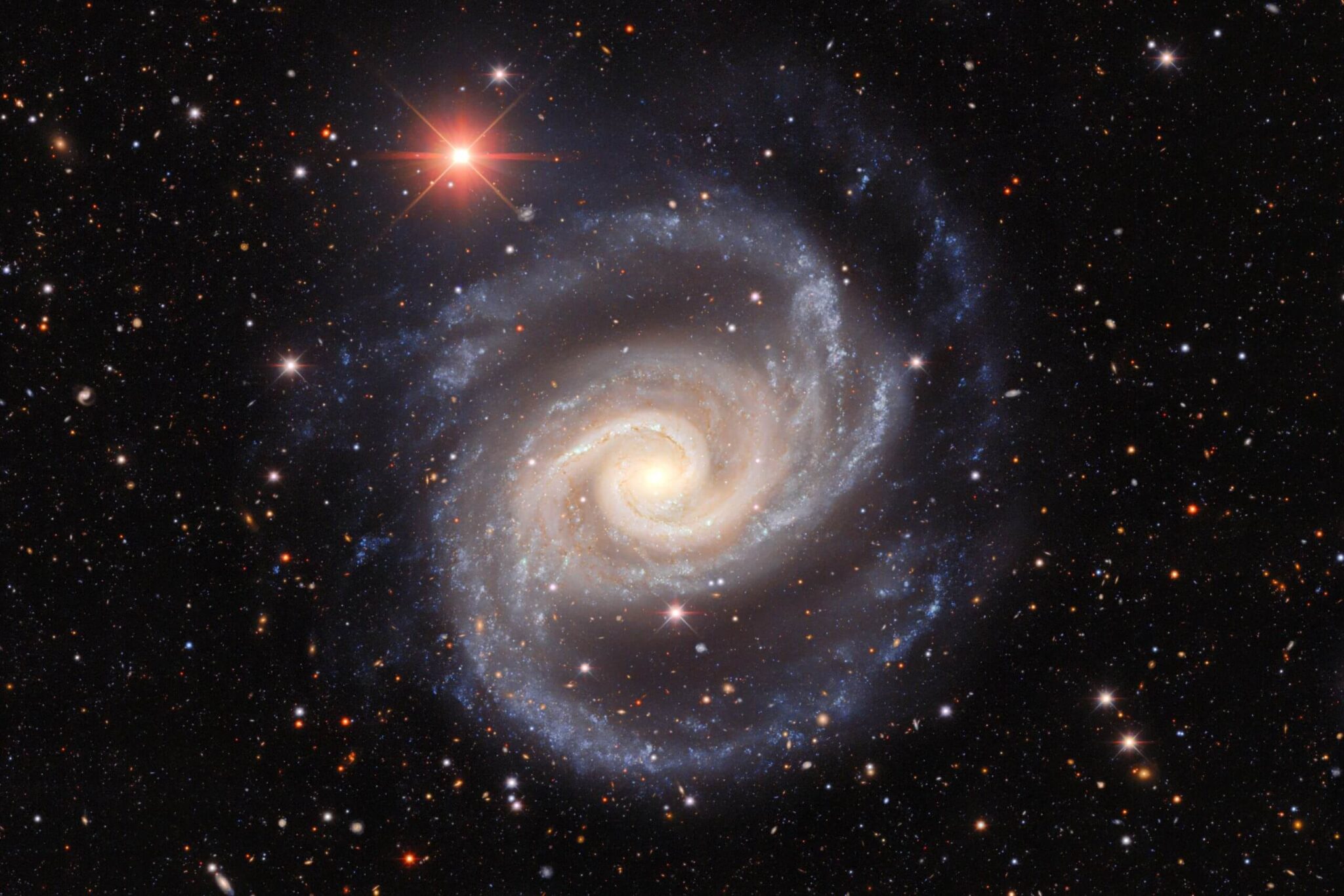The image was taken for the DES (Dark Energy Survey) project funded by the US Department of Energy and the National Science Foundation and whose goal is to discover the nature of dark energy by mapping millions of galaxies. The photo was taken by the camera specially designed for DES and operated between 2013 and 2019

The Dark Energy Project camera captures a collection of celestial phenomena in one shot.
Located in the Dorado Group and about 1566 million light-years away, NGC 70 is a grand-design spiral galaxy with two arms that appear to wrap around the galactic core, like the arms of a dancer as she twirls in a wild twirl. The photo was taken in Chile at the CTIO observatory using “The dark energy camera". Because the plane of the galaxy is perpendicular to our line of sight and because of the location of the galaxy and its composition it is a treasure trove of observational opportunities for astronomers in many fields of astronomy.
NGC 1566 is home to stars in all stages of stellar evolution. In this image, the light blue color that outlines the arms of the galaxy is due to young stars burning brightly. Darker spots in these arms are dust trails. The arms are rich in gas, creating large regions that provide the perfect environment for new star formation. Closer to the center of the galaxy are older, cooler stars and dust, as indicated by the redder color in the image. This galaxy also had an observed stellar end-of-life event, when a supernova called SN2010el exploded in the arena in 2010.
The dominant factor at the center of NGC 1566 is a supermassive black hole. The clear and very luminous nucleus of the galaxy is called an active galactic nucleus. The light from the nucleus changes in periods of only hundreds of days, which makes it difficult for astronomers to classify it accurately.
NGC 1566 is the brightest galaxy and one of three dominant galaxies in a collection of galaxies called the Dorado Group, the other galaxy in which is NGC 1515. A group of galaxies is a collection of fewer than 50 galaxies, held together loosely by the gravitational pull each exerts on the others. The Dorado group includes at least 46 galaxies. NGC 1566 itself is so dominant that it has its own group, the NGC 1566 group. Because of NGC 1566's dominant role in the Dorado group, it is an important target for scientists trying to determine the distance to the group itself, thereby improving our understanding of large-scale structures in the universe.
The image was taken for the DES (Dark Energy Survey) project funded by the US Department of Energy and the National Science Foundation and whose goal is to discover the nature of dark energy by mapping millions of galaxies. The image was taken by the Dark Energy Camera specially designed for DES and operated between 2013 and 2019.
The galaxy pictured here continues to intrigue astronomers. NGC 1566 and eighteen other nearby galaxies will be observed in infrared light with NASA's James Webb Space Telescope (JWST) by Gemini Observatory chief scientist NOIRLab astronomer Janice Lee as part of the PHANGS project. This project will make observations of galaxies facing Earth, and will use JWST's ability to see through gas and dust to study stars in their earliest stages of formation.
More of the topic in Hayadan:
- Look for dark energy and find more dwarf planets beyond Neptune-Rahab
- Dark energy - a chapter from the book "Astrophysics for those who don't have time" by Neil deGrasse Tyson
- The dark energy puzzle
- Has scientific research been harmed as a result of the Bush plan to divert resources to flights to the moon and Mars?
- Hubble reveals: dark energy has existed for at least 9 billion years
